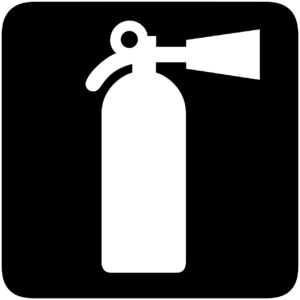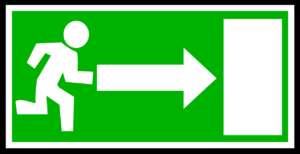Car rides can be an enjoyable and convenient way to travel with your kids, but it’s essential to prioritize their safety on the road. In this article, you will discover key tips and must-have items to ensure emergency preparedness during car rides. Whether it’s facing unexpected breakdowns or dealing with minor injuries, being equipped with knowledge and the right tools can give you peace of mind during your family adventures. So buckle up and get ready to learn how to keep your little ones safe and secure while on the go.
Importance of Emergency Preparedness
As a parent, ensuring the safety and well-being of your children is always a top priority. When it comes to car rides, emergency preparedness becomes even more crucial. Whether you’re heading out for a family road trip or just running errands around town, being prepared for any potential emergencies can make all the difference. By equipping yourself with the necessary knowledge and tools, you can better protect your children and yourself during car rides.
Understanding Potential Risks
It is essential to have a clear understanding of the potential risks you may encounter while on the road. Car emergencies can range from minor inconveniences to life-threatening situations, and being aware of these risks allows you to be better prepared. Some of the most common types of car emergencies include accidents, breakdowns, a flat tire, running out of fuel, or getting stuck in severe weather conditions. Additionally, roadside hazards such as debris, potholes, or construction zones can pose a threat to safety.

Photo by Jacob Spence on Unsplash
Preparing Your Vehicle
Preparing your vehicle is a critical step in emergency preparedness. Regular vehicle maintenance is essential to ensure that your car is in good working condition. This includes checking the fluid levels, such as oil and coolant, and making sure the tires are properly inflated. Keeping a spare tire in good condition, along with the necessary tools for changing it, is also crucial. Furthermore, having emergency warning devices, such as roadside flares or reflective triangles, can alert other drivers to a potential hazard.
Essential Items to Keep in Your Car
Having essential items stocked in your car can make a significant difference in an emergency situation. Create an emergency kit checklist that includes items such as a flashlight, batteries, a first aid kit, a multipurpose tool, and a window breaker. In case you find yourself stranded for an extended period, it’s essential to have food and water supplies available. Pack non-perishable snacks and bottled water that can sustain your family until help arrives. Additionally, keep extra clothing and blankets in the car to stay warm during unforeseen circumstances.

Photo by Andrew Pons on Unsplash
Proper Use and Installation of Car Seats
Properly installing and using car seats is crucial for the safety of your children during car rides. Firstly, ensure that you choose an appropriate car seat based on your child’s age, weight, and height. It is recommended to use rear-facing seats for infants, followed by forward-facing seats, and eventually transitioning to booster seats when your child is ready. Installing car seats correctly is essential, and you can refer to the manufacturer’s instructions or consult with a professional to ensure proper installation. Regularly check the safety of the car seat, including the straps, buckles, and overall integrity of the seat itself.
Creating a Safety Plan
Creating a safety plan is an important part of emergency preparedness. Establishing communication protocols with your family members is essential, ensuring that everyone knows what to do in case of an emergency. Designate emergency meeting points in case you get separated during an accident or if you need to gather at a safe location. Additionally, developing a thorough family emergency plan that includes evacuation routes and emergency contact information can save valuable time and provide peace of mind.

Photo by JD Weiher on Unsplash
Teaching Kids About Car Safety
Educating your children about car safety is critical to ensure their understanding and cooperation during car rides. Emphasize the importance of proper behavior in the car, including staying seated, wearing seat belts, and keeping hands and feet inside the vehicle. Teach them about the dangers of strangers and the importance of never accepting rides from someone they don’t know. By instilling these safety measures from an early age, you can help your children develop good habits and a strong awareness of their surroundings.
Knowing Basic First Aid
Having a basic understanding of first aid is invaluable when it comes to car emergencies. Consider taking a first aid course to equip yourself with the necessary knowledge and skills. Having a first aid kit specifically designed for car emergencies is also essential. It should include items such as bandages, antiseptic wipes, gloves, and pain relievers. Make sure you know how to address common injuries that may occur during car emergencies, such as cuts, bruises, or fractures. This knowledge can make a significant difference in providing immediate care until professional help arrives.

Emergency Communication and Contact Information
In the event of an emergency, having access to emergency communication and contact information is crucial. Keep a list of emergency contacts accessible in your car, including phone numbers for family members, doctors, and roadside assistance services. Ensure that your cell phone is always charged and consider having a car charger available to keep it powered. Additionally, explore the use of emergency apps and services that can provide instant access to emergency assistance when needed.
Importance of Emergency Preparedness
When it comes to car rides, emergency preparedness should never be overlooked. The importance of being prepared for any potential emergencies cannot be overstated. By understanding the potential risks, preparing your vehicle, and having essential items stocked in your car, you can significantly enhance the safety of your family during car rides. Properly using and installing car seats, creating a safety plan, teaching kids about car safety, and knowing basic first aid further contribute to a comprehensive approach to emergency preparedness. Lastly, ensuring that you have accessible emergency communication and contact information can make all the difference when faced with an unexpected situation on the road. Remember, a little preparation can go a long way in keeping you and your loved ones safe during car rides.


